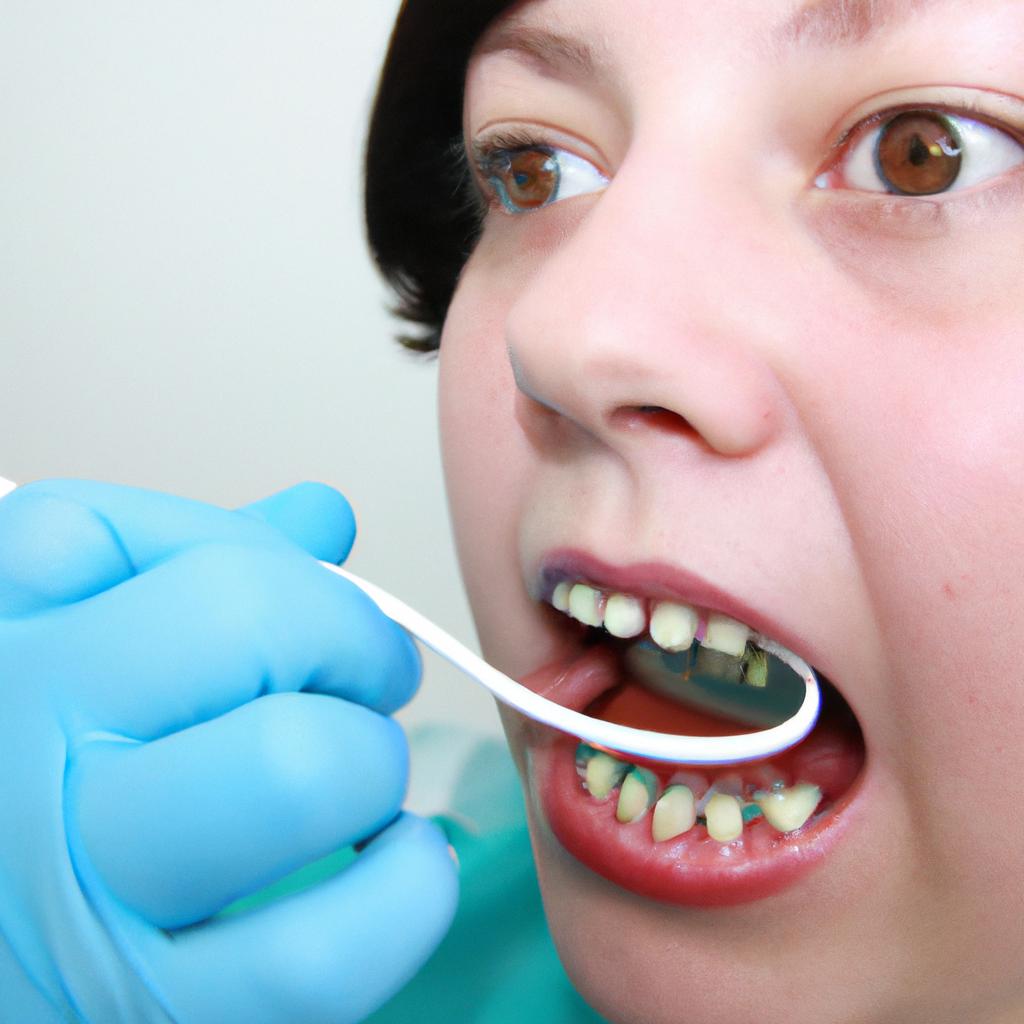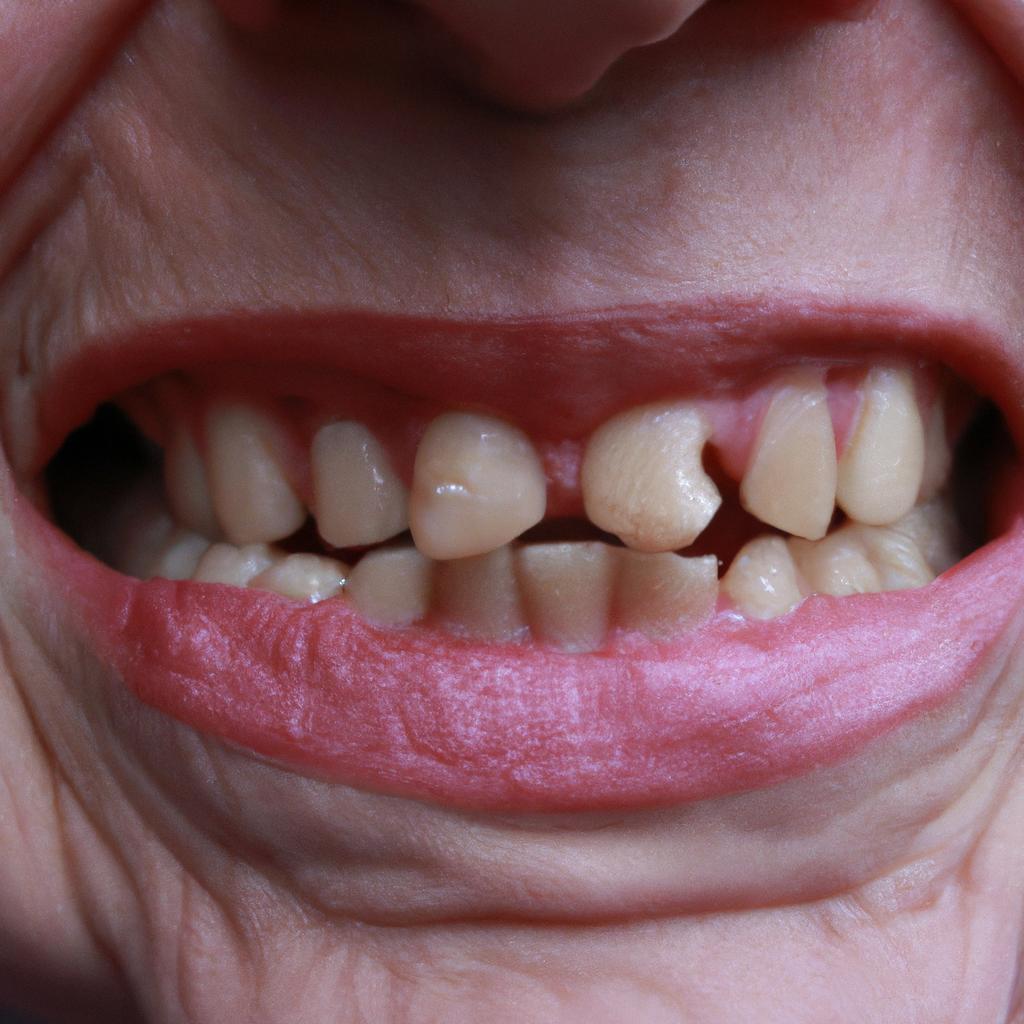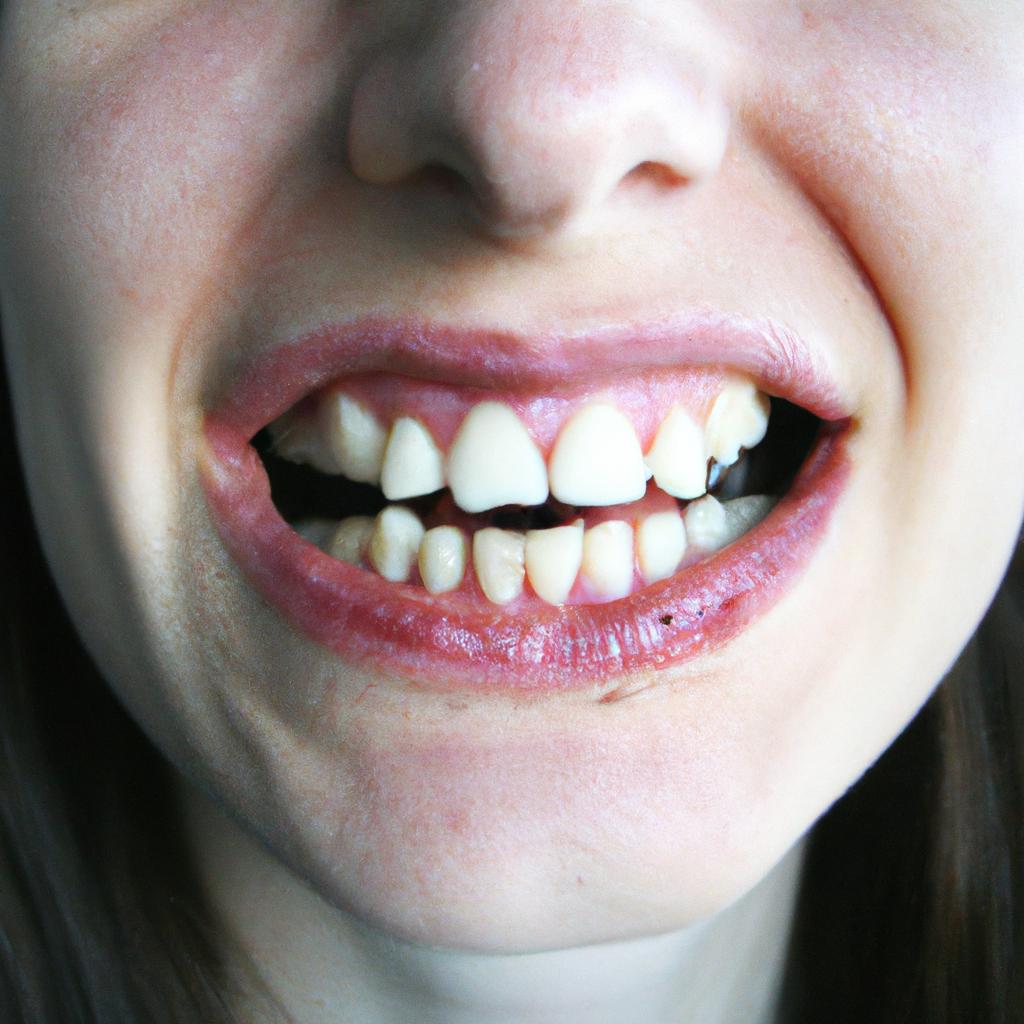Complete Dentures in Prosthodontics: A Comprehensive Guide

Complete dentures play a critical role in restoring oral function and improving the quality of life for individuals with missing teeth. This comprehensive guide aims to provide an in-depth understanding of complete dentures in prosthodontics, exploring various aspects such as fabrication techniques, materials used, and clinical considerations. To illustrate the importance of this topic, let us consider a hypothetical scenario where a patient, Mr. Smith, has lost all his natural teeth due to severe periodontal disease. With no remaining functional dentition, he experiences difficulties in chewing and speaking, leading to decreased self-confidence and social interactions.
In the field of prosthodontics, complete dentures serve as artificial replacements for both upper and lower dental arches when there are no remaining natural teeth present. Fabricating complete dentures requires meticulous planning and execution to ensure optimal fit, function, esthetics, and patient satisfaction. The process involves multiple stages including initial assessment, impressions or molds of the edentulous (toothless) ridges, jaw relationship recording, trial fitting sessions, and final delivery of the completed prostheses.
Understanding the principles behind complete denture construction is crucial for both prosthodontists and general dental practitioners alike as it allows them to effectively manage cases involving patients who have lost all their natural teeth. By familiarizing themselves with the fabrication techniques and materials used in complete denture construction, dental professionals can provide comprehensive treatment plans that meet the specific needs of each patient.
When a patient like Mr. Smith presents with complete edentulism, it is important to conduct a thorough initial assessment to gather relevant information about their medical and dental history, as well as any existing oral conditions that may impact the success of complete denture treatment. This assessment also involves evaluating the patient’s expectations and desires for their new prostheses.
Impressions or molds of the edentulous ridges are then taken to accurately capture the shape and contours of the underlying tissues. These impressions serve as a foundation for creating custom-made trays that will be used during subsequent appointments for jaw relation records and trial fitting sessions.
Jaw relationship recording is a critical step in complete denture construction as it establishes the spatial relationship between the upper and lower jaws. This ensures proper occlusion (bite) and articulation (how the teeth come together). Various techniques such as interocclusal records, facebow transfers, and centric relation registrations are utilized to achieve accurate jaw relationships.
Trial fitting sessions allow for adjustments and refinements to ensure optimal fit, function, esthetics, and overall comfort. During these sessions, patients try on wax mock-ups of their dentures to assess factors such as tooth position, lip support, phonetics (speech), and stability. Necessary modifications are made based on patient feedback before proceeding to final prosthesis fabrication.
Once all necessary adjustments have been made, the completed dentures are delivered to the patient. Proper care instructions should be provided to ensure longevity and maintenance of the prostheses.
In summary, complete dentures play a vital role in restoring oral function and improving quality of life for individuals with missing teeth. Understanding the principles behind their construction allows dental professionals to provide effective treatment plans tailored to each patient’s needs. Through meticulous planning, execution, and patient collaboration, complete dentures can greatly enhance a patient’s oral health and overall well-being.
Indications for Complete Dentures
Imagine a patient, Mr. Smith, who has lost all his teeth due to severe periodontal disease. He is experiencing difficulties in chewing and speaking properly, which not only affects his oral health but also impacts his overall well-being. In such cases, complete dentures serve as an effective treatment option to restore the function and aesthetics of the oral cavity.
Importance of Indications:
Determining the indications for complete dentures involves careful consideration of various factors including clinical assessments, patient preferences, and individualized treatment planning. The following bullet points highlight key reasons why individuals may require complete dentures:
- Extensive tooth loss: Complete dentures are recommended when patients have lost all their natural teeth in either or both dental arches.
- Severe periodontal disease: When gum disease progresses to an advanced stage causing extensive damage to the supporting structures of the teeth, extraction and subsequent placement of complete dentures become necessary.
- Trauma or injury: Accidents resulting in multiple tooth avulsions can lead to functional impairments that necessitate prosthetic replacement with complete dentures.
- Congenital abnormalities: Some individuals are born without certain permanent teeth or with developmental conditions affecting tooth formation. In such cases, complete dentures provide a suitable alternative for restoring masticatory function and enhancing appearance.
Table – Factors Influencing Indication for Complete Dentures:
| Factor | Description |
|---|---|
| Patient’s age | Younger patients might opt for implant-supported options while older patients may prefer conventional complete denture prostheses. |
| Bone resorption | Consideration should be given to bone volume and quality as they affect stability and retention of the prosthesis. |
| Oral hygiene habits | Patients’ ability to maintain proper oral hygiene should be evaluated before determining whether complete denture therapy is appropriate. |
| Financial constraints | The cost of treatment, including denture fabrication and subsequent maintenance, should be discussed with the patient beforehand. |
In summary, complete dentures are indicated when individuals experience extensive tooth loss due to various reasons such as periodontal disease, trauma, or congenital abnormalities. Factors influencing their indication include the patient’s age, bone resorption levels, oral hygiene habits, and financial considerations. Understanding these indications is crucial for prosthodontists in order to provide appropriate treatment options that meet patients’ functional and aesthetic needs.
Transition into the next section – “Steps in Complete Denture Fabrication”:
Once the indications have been thoroughly assessed, it is important to proceed with a systematic approach in fabricating complete dentures to ensure optimal outcomes for patients seeking this restorative solution.
Steps in Complete Denture Fabrication
Building on the understanding of the indications for complete dentures, we now delve into the crucial steps involved in their fabrication. Through a systematic approach, prosthodontists ensure that patients receive optimal care and achieve functional and esthetic outcomes. Let us explore these steps in detail.
Case Study:
Consider Mrs. Johnson, a 70-year-old patient with severe tooth loss due to advanced periodontal disease. She experiences difficulty chewing and speaking, leading to reduced quality of life. After a thorough assessment, it is determined that complete dentures are the most appropriate treatment option for her restoration needs.
Step 1: Preliminary Impressions
The first step involves obtaining preliminary impressions of both arches using irreversible hydrocolloid or alginate materials. These impressions provide an initial record of the oral tissues and aid in constructing custom trays for subsequent impression procedures.
Step 2: Final Impressions
In this phase, custom trays are fabricated based on preliminary impressions and used to obtain definitive recordings of the oral tissues. High-quality elastomeric impression materials such as polyvinyl siloxane (PVS) or polyether are utilized to capture accurate details of the edentulous ridges and surrounding structures.
- Restoring confidence through improved aesthetics.
- Enhancing speech clarity and communication abilities.
- Facilitating efficient mastication for proper nutrition.
- Promoting psychological well-being by restoring a natural smile.
Step 3: Jaw Relations Record
To establish appropriate occlusal relationships between the maxilla and mandible, jaw relations records are obtained during this stage. This includes determining centric relation position, vertical dimension at rest, and establishing correct midline orientation.
| Step | Procedure |
|---|---|
| 1 | Preliminary Impressions |
| 2 | Final Impressions |
| 3 | Jaw Relations Record |
Understanding the essential steps involved in complete denture fabrication sets the foundation for mastering impression techniques. In the subsequent section, we will explore various methods employed to achieve accurate impressions and ensure optimal outcomes for patients.
(Note: The next section is about “Impression Techniques for Complete Dentures”)
Impression Techniques for Complete Dentures
Building on the previous section’s exploration of the steps involved in complete denture fabrication, this section delves into impression techniques that are crucial for achieving optimal outcomes. To illustrate these techniques, let us consider a hypothetical case study involving a patient named Mr. Johnson.
Case Study:
Mr. Johnson, a 65-year-old man with multiple missing teeth and deteriorating oral health, sought prosthodontic treatment to restore his ability to chew properly and enhance his overall quality of life. After careful examination and assessment by the prosthodontist, it was determined that complete dentures would be the most suitable option for him.
Impression Techniques:
- Border Molding: This technique involves using modeling compounds or elastomeric materials to create an accurate impression of the borders of the edentulous areas in the oral cavity. By carefully molding and shaping these borders, proper extension and stability can be achieved for the final denture.
- Functional Impression Technique: In this method, impressions are taken while the patient performs various functional movements such as chewing or speaking. The goal is to capture accurate information about muscle movement, tongue position, and jaw relations during functional activities.
- Neutral Zone Technique: This technique focuses on finding an equilibrium between the forces exerted by muscles at rest within the oral cavity. Impressions are made using wax or silicone material placed between neutral zones created by opposing muscular forces.
- Selective Pressure Impression Technique: This technique employs selective pressure to achieve even distribution of load-bearing areas in order to improve retention and stability of complete dentures.
- Increased confidence when smiling
- Improved speech clarity
- Enhanced masticatory efficiency
- Restored facial aesthetics
Table Example:
| Advantages | Disadvantages | Considerations |
|---|---|---|
| Natural appearance | Initial discomfort | Patient cooperation |
| Improved self-esteem | Learning curve | Regular maintenance |
| Restored oral function | Adjustments required | Bone resorption |
| Customizable | Potential allergies | Prosthesis lifespan |
Understanding the importance of impression techniques in complete denture fabrication sets the stage for exploring occlusal considerations. This subsequent section will delve into various factors that must be taken into account to achieve an optimal occlusion and ensure patient satisfaction.
[Next section H2: ‘Occlusal Considerations in Complete Dentures’]
Occlusal Considerations in Complete Dentures
Section H2: Occlusal Considerations in Complete Dentures
Having discussed the various impression techniques for complete dentures, it is now crucial to shift our focus towards occlusal considerations. Proper occlusion plays a vital role in the function and longevity of complete dentures. Let us delve into some essential aspects that prosthodontists should bear in mind when addressing occlusal concerns.
Occlusal harmony is fundamental to achieving successful complete denture therapy. One key aspect to consider is establishing balanced occlusion, which involves equal distribution of forces during mastication. For instance, let’s take the case of Mrs. Smith, an elderly patient who recently received complete dentures. She complains of discomfort while chewing tough textures such as steak due to uneven biting pressure on her posterior teeth. This scenario highlights the importance of ensuring bilateral simultaneous contacts during excursive movements, allowing for efficient chewing and preventing premature dislodgement or instability.
To achieve optimal occlusion, several factors must be taken into account:
- Vertical dimension: Determining the correct vertical dimension ensures proper positioning of maxillary and mandibular teeth relative to each other and surrounding structures.
- Centric relation: Establishing centric relation aids in determining the appropriate condylar position within the glenoid fossa, providing stability during jaw movements.
- Anterior guidance: The anterior teeth play a crucial role in establishing anterior guidance by guiding mandibular movements during protrusive and lateral excursions.
- Cusp angulation: Proper cusp angulation allows for effective food breakdown without causing excessive stress on supporting tissues.
Table: Factors Affecting Occlusal Harmony
| Factor | Importance |
|---|---|
| Vertical dimension | Essential |
| Centric relation | Crucial |
| Anterior guidance | Vital |
| Cusp angulation | Significant |
Considering these factors, prosthodontists are able to create complete dentures that not only restore function but also provide comfort and stability for patients like Mrs. Smith. By addressing occlusal considerations with meticulous attention to detail, the likelihood of complications such as instability or discomfort can be significantly reduced.
esthetics. Achieving natural-looking smiles is a key objective when designing complete dentures. Let us now explore how esthetic principles guide prosthodontists in creating aesthetically pleasing outcomes for their patients without compromising functionality.
Esthetics in Complete Dentures
Section H2: Esthetics in Complete Dentures
Achieving natural-looking and aesthetically pleasing dentures is essential for patient satisfaction and overall success of prosthodontic treatment.
To illustrate the importance of esthetics, let’s consider a hypothetical case study of Mr. Smith, a 60-year-old patient who has lost all his teeth due to advanced periodontal disease. As part of his oral rehabilitation plan, complete dentures are prescribed to restore both function and appearance. During the fabrication process, attention must be given to various esthetic considerations:
-
Tooth selection: The choice of artificial teeth plays a vital role in achieving optimal esthetics. Factors such as tooth shape, size, color, and arrangement need to be carefully evaluated and customized according to each individual patient’s facial features, age, gender, and personality traits.
-
Lip support: Proper lip support is crucial for creating a youthful smile and facial harmony with complete dentures. A balanced relationship between the upper and lower lips must be achieved through appropriate positioning and contouring of the artificial teeth.
-
Gingival contours: Natural-looking gingival contours enhance the esthetic outcome of complete dentures by mimicking the soft tissue architecture present around natural teeth. Attention should be given to replicate the interdental papillae and gingival scalloping to create an authentic appearance.
-
Phonetics: The ability to speak clearly is closely associated with proper esthetics in complete denture design. Accurate placement of artificial teeth enables patients like Mr. Smith to achieve improved speech sound production without compromising their self-confidence or social interactions.
In order to further understand these key principles governing esthetics in complete dentures, refer to Table 1 below:
| Esthetic Considerations | Description |
|---|---|
| Tooth Shape | Select teeth with appropriate morphology, such as square or ovoid, to match the patient’s facial features. |
| Lip Support | Ensure that the anterior teeth provide adequate support to maintain proper lip positioning and prevent sagging of the soft tissues. |
| Gingival Contours | Replicate natural gingival contours by carefully sculpting artificial gums for a lifelike appearance. |
| Phonetics | Accurate placement of artificial teeth enables normal speech production while maintaining esthetic harmony. |
By incorporating these esthetic considerations into complete denture treatment plans, prosthodontists can help patients like Mr. Smith achieve not only functional but also pleasing and natural-looking smiles.
As important as it is to create aesthetically appealing complete dentures, ensuring their long-term maintenance and care is equally crucial. The subsequent section will delve into the essential aspects of maintaining and caring for complete dentures without compromising their longevity or functionality
Maintenance and Care of Complete Dentures
Section H2: Maintenance and Care of Complete Dentures
Transitioning from the previous section on esthetics, it is essential to discuss the crucial aspect of maintenance and care when it comes to complete dentures. Proper maintenance not only ensures longevity but also guarantees optimal functionality and patient satisfaction. Let us explore some key considerations in maintaining and caring for complete dentures.
Firstly, regular cleaning is paramount to prevent plaque accumulation and maintain oral health. Patients should be advised to remove their dentures after meals and rinse them thoroughly under running water to eliminate food debris. The use of a soft-bristle brush or denture-specific cleaner can effectively remove any residual stains or deposits. Additionally, patients must be reminded that brushing their natural teeth (if present) and massaging their gums with a soft toothbrush are equally important for overall oral hygiene.
Secondly, proper storage of dentures during periods of non-use is often overlooked but plays an integral role in preventing damage. It is recommended that patients store their dentures in a clean container filled with appropriate soaking solution or water overnight. This prevents dehydration of the acrylic material, which could lead to warping or distortion over time.
Lastly, periodic professional check-ups are indispensable for ensuring the continued fit, function, and aesthetics of complete dentures. During these visits, prosthodontists can assess any changes in oral structures or occlusion that may affect the performance of the prostheses. Adjustments or relines might be necessary to maintain ideal stability and comfort. Furthermore, patients can receive valuable guidance on potential dietary modifications or habits that may impact their denture’s condition.
To emphasize the importance of maintenance and care further, consider this hypothetical scenario: A middle-aged patient had recently received complete maxillary and mandibular dentures following extractions due to severe periodontal disease. Initially thrilled with his newfound ability to eat comfortably once again, he neglected proper cleaning routines as life got busier. Consequently, his dentures developed a persistent odor and accumulated plaque, leading to oral discomfort and gum inflammation.
To avoid such unfortunate circumstances, patients should be encouraged to adopt the following practices:
- Regularly brush their dentures with a soft-bristle brush or use denture-specific cleaners.
- Remove and rinse dentures after meals to prevent food debris accumulation.
- Store dentures in an appropriate container filled with soaking solution or water during periods of non-use.
- Schedule regular check-ups with prosthodontists for professional assessment and adjustments.
Table: Common Denture Cleaning Solutions
| Solution | Pros | Cons |
|---|---|---|
| Mild dish soap | Widely available | Potential residue buildup |
| Vinegar | Natural disinfectant | Strong smell |
| Sodium hypochlorite | Effective against stains | Requires proper dilution |
| Commercial denture soak | Convenient packaging | May contain harsh chemicals |
In conclusion, maintenance and care are indispensable aspects of complete denture prosthetics. By incorporating regular cleaning routines, proper storage practices, and periodic professional check-ups into their daily lives, patients can ensure optimal comfort, functionality, and aesthetics while avoiding potential complications that may arise from neglecting these crucial responsibilities. Ultimately, by prioritizing maintenance measures, individuals can enjoy the full benefits of complete dentures for years to come.




